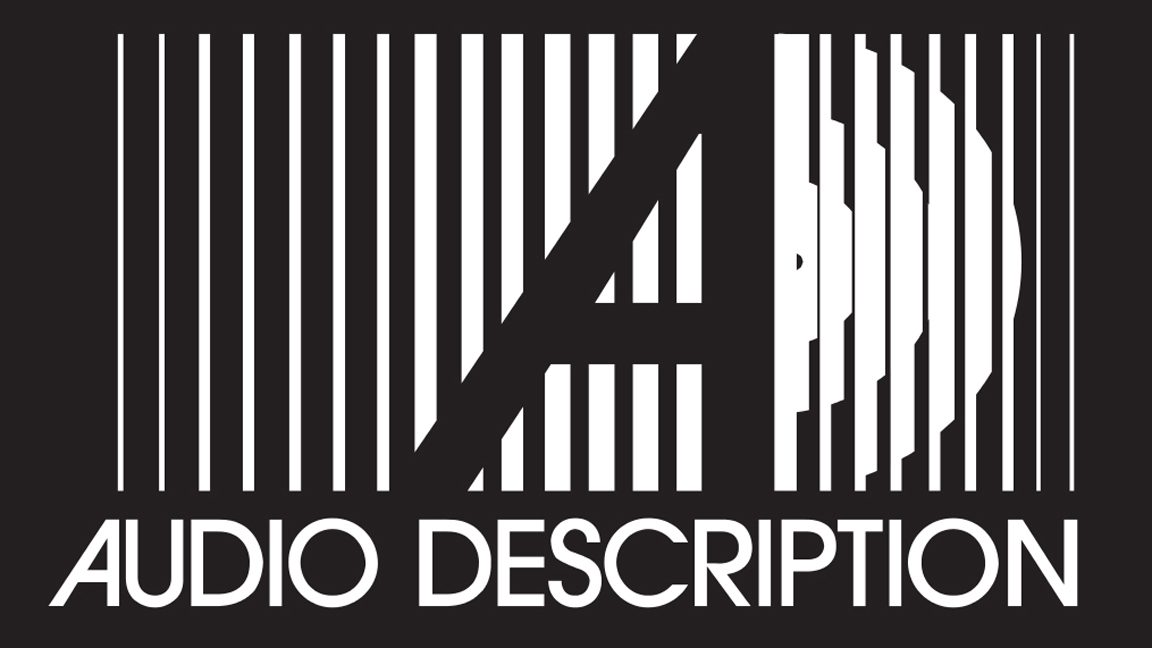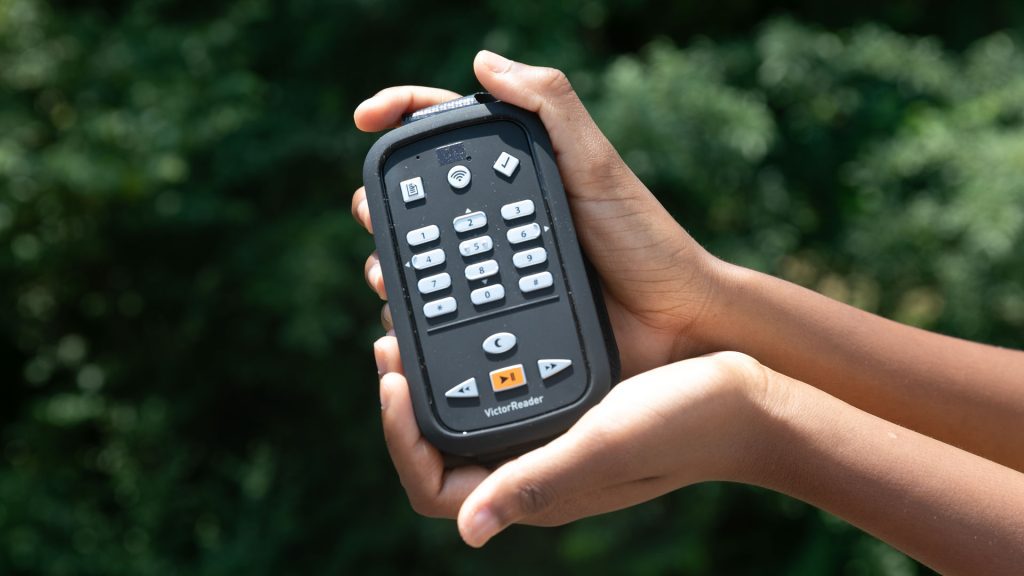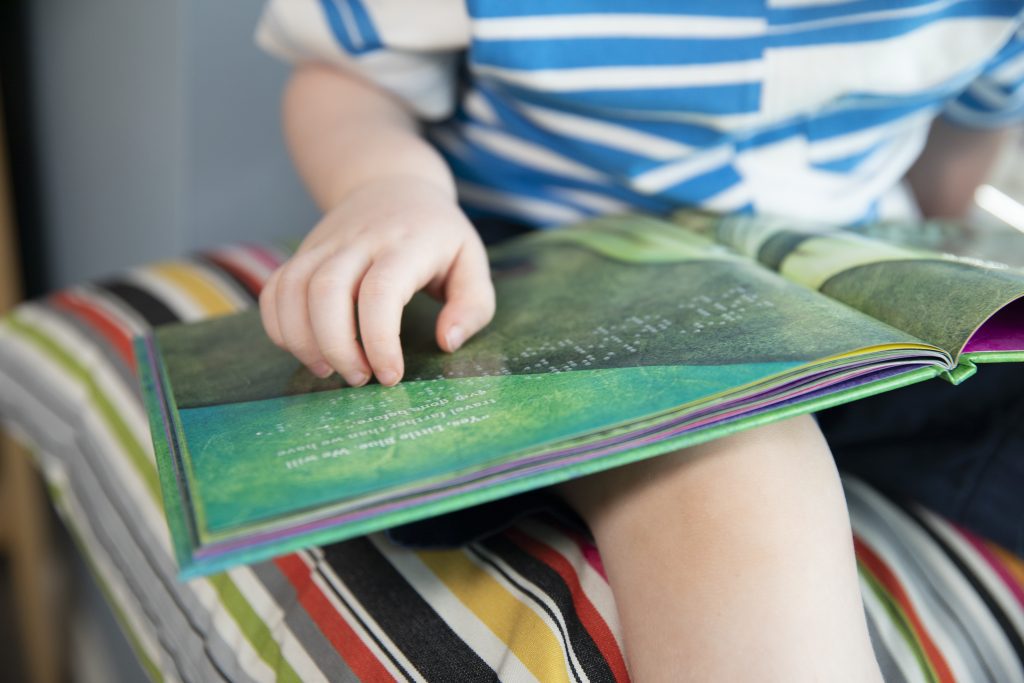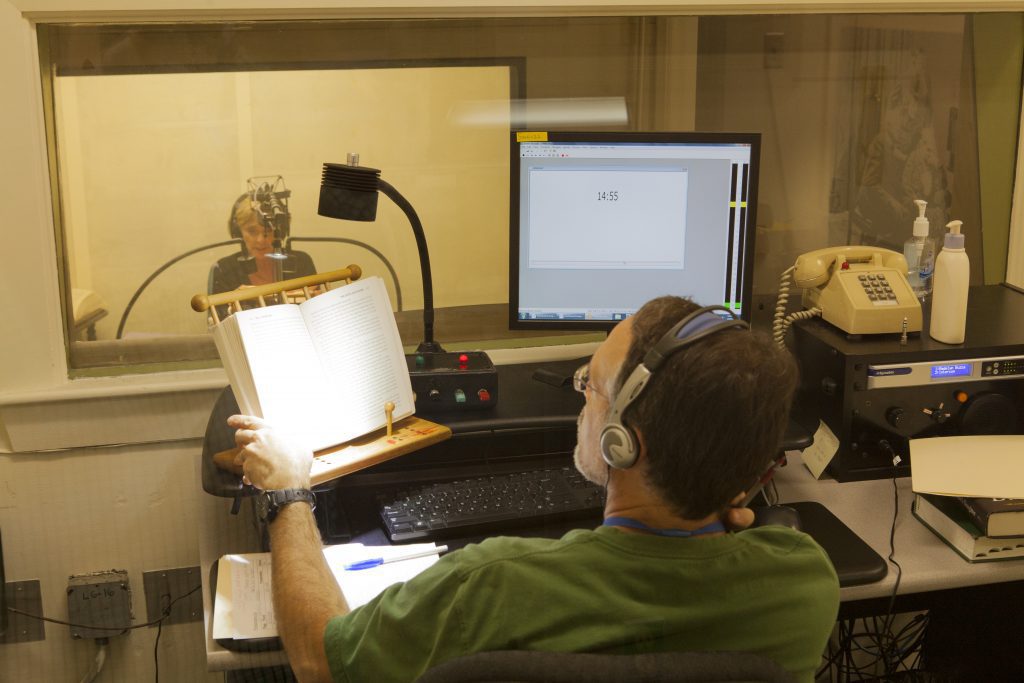Adventures in Audio Description

Have you ever heard an audio described movie or TV program? Maybe it was on a streaming service or in a movie theater? Several years ago, I was re-watching my Moulin Rouge DVD and I must have accidentally pushed a button on the remote because I had inadvertently turned on audio description for the film. As a sighted person I truthfully had never heard of audio description. It took me a few minutes to realize what was going on. I had seen the movie before, but I didn’t remember that narrator. I was intrigued. I kept the description on and ended up watching the whole movie like that. Moulin Rouge is a bit frenetic, and this unexpected voice was pointing out details that I had never noticed before.
For sighted people who are unaware, audio description (AD) is an accessibility feature that provides a way for viewers who are blind or with low vision to know what is happening on the screen, or even in live theater. In the spaces between dialogue, a narrator describes the visual elements of the story. I recently completed a week-long training with the Audio Description Institute, as part of my broader education about the blindness field. The Institute was facilitated by Dr. Joel Snyder (who literally wrote the book on the subject) and was presented in conjunction with the American Council of the Blind. Due to Covid, the training was conducted over zoom which made it very convenient to attend the five-day training. The whole program was exceptionally well planned, and Joel and the other presenters did a wonderful job explaining the course content, shared lots of videos (which was appropriate given the subject matter), and included a hefty dose of humor and kept the energy up throughout the week—which is an incredibly difficult feat to accomplish during 20 hours of zoom.
I certainly don’t claim to be an expert on description after a one-week course, but some of the highlights I learned: audio description is an art form- not just anyone can or should write or narrate description. The description should be objective, succinct, and be engaging, matching the energy and tone of the program (for example narration for an action film should not sound like the commentary of a golf match). Not every program has audio description or good quality audio description. As a number of AD users attested, poorly executed audio description or computer-generated voice narration is even worse than having no audio description available—which in itself is not good. So, in addition to simply being available, the description should also be good quality.
One of the first lessons I learned about accessibility is that when you make something accessible for one group of people, you often improve things for everyone. Like curb ramps on sidewalks that were designed for people with disabilities but are also enjoyed by people with strollers or bikes. I personally watch whatever programs I can with subtitles. Although I can hear the dialogue, I find by reading the subtitles I catch things I may not have heard clearly (like with British TV shows), and I can keep up with speedy dialogue (I’m looking at you Gilmore Girls). I’ve heard of sighted people using AD so they can watch TV while doing things like cooking dinner or while stuck in traffic where they’re not able to watch the screen but can still follow along a program by listening. This is just another example of how inclusive practices can have benefits beyond the intended goal.
So, the next time you watch a movie or TV show I’d encourage you to check and see if audio description is available. You may be surprised like I was by what you notice when it’s described. But more importantly, the audio description allows everyone the opportunity to enjoy a show. After all, what are we to do this pandemic but binge-watch our favorite shows?
Learn more about the Audio Description Project and find tranings.
Mary Beth Williams is the Museum Collections Manager at APH.
Header image: NPS Graphics, converted by User:ZyMOS, Public domain, via Wikimedia Commons.
Share this article.
Related articles

Enjoy the Journey with the VR Cardinal LE
Students need a book reader to increase learning and a reliable GPS to aid them in Orientation and Mobility (O&M)...

APH’s Partnership with Dolly Parton’s Imagination Library Brings Literacy Resources to All Students
Every book is a gateway to learning and exploration. Whether you are listening to a novel or guiding your fingers...

APH Behind the Scenes: The Talking Book Studio
Have you ever wondered how talking books are produced for people who are blind and have low vision? We spoke...
